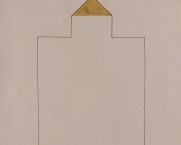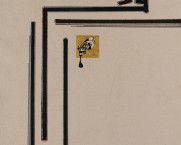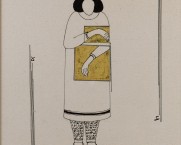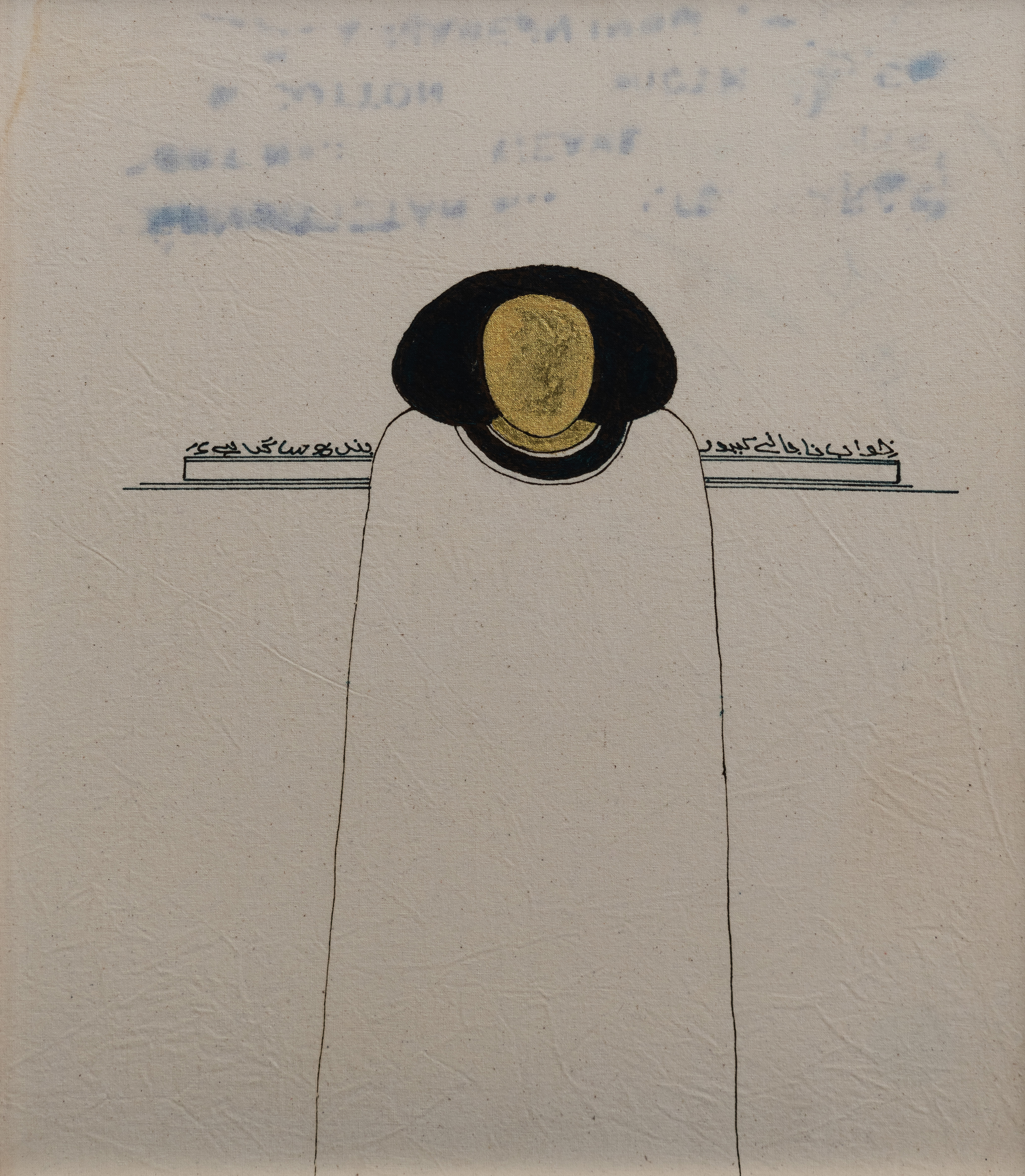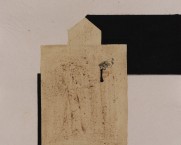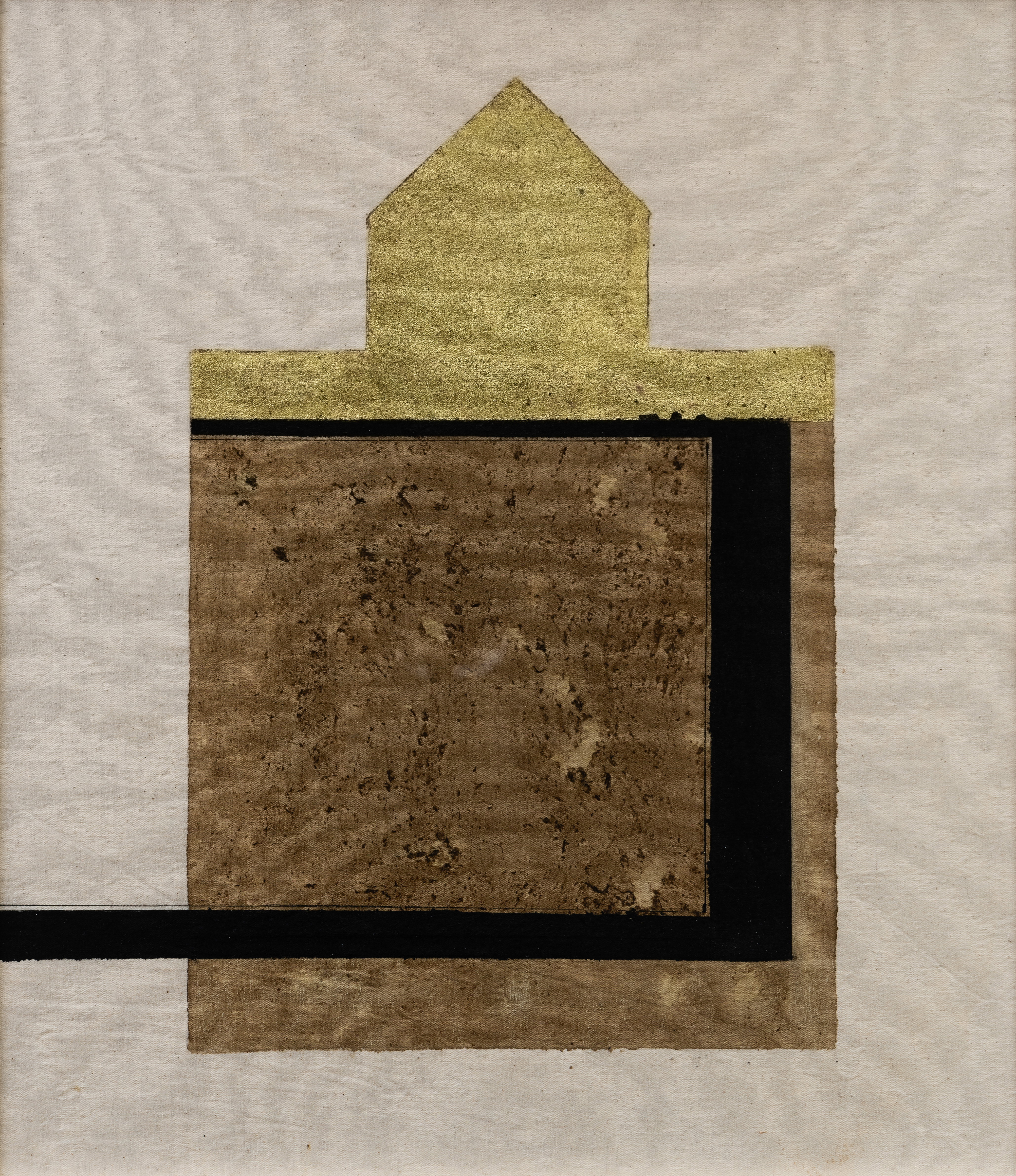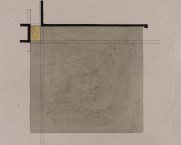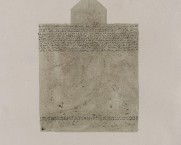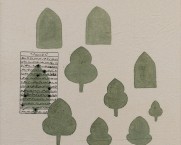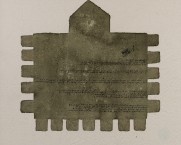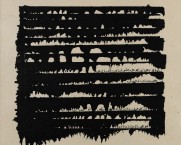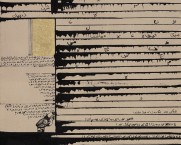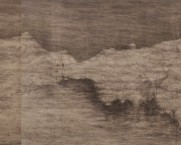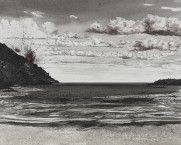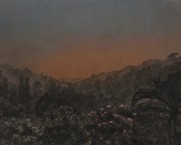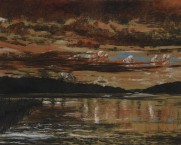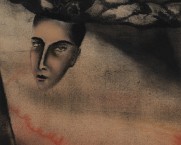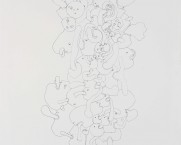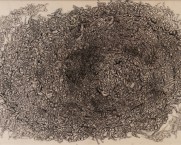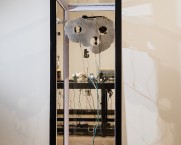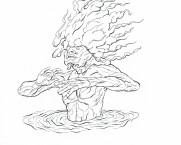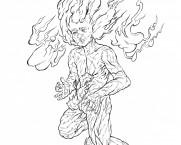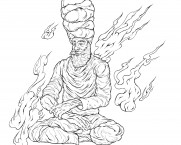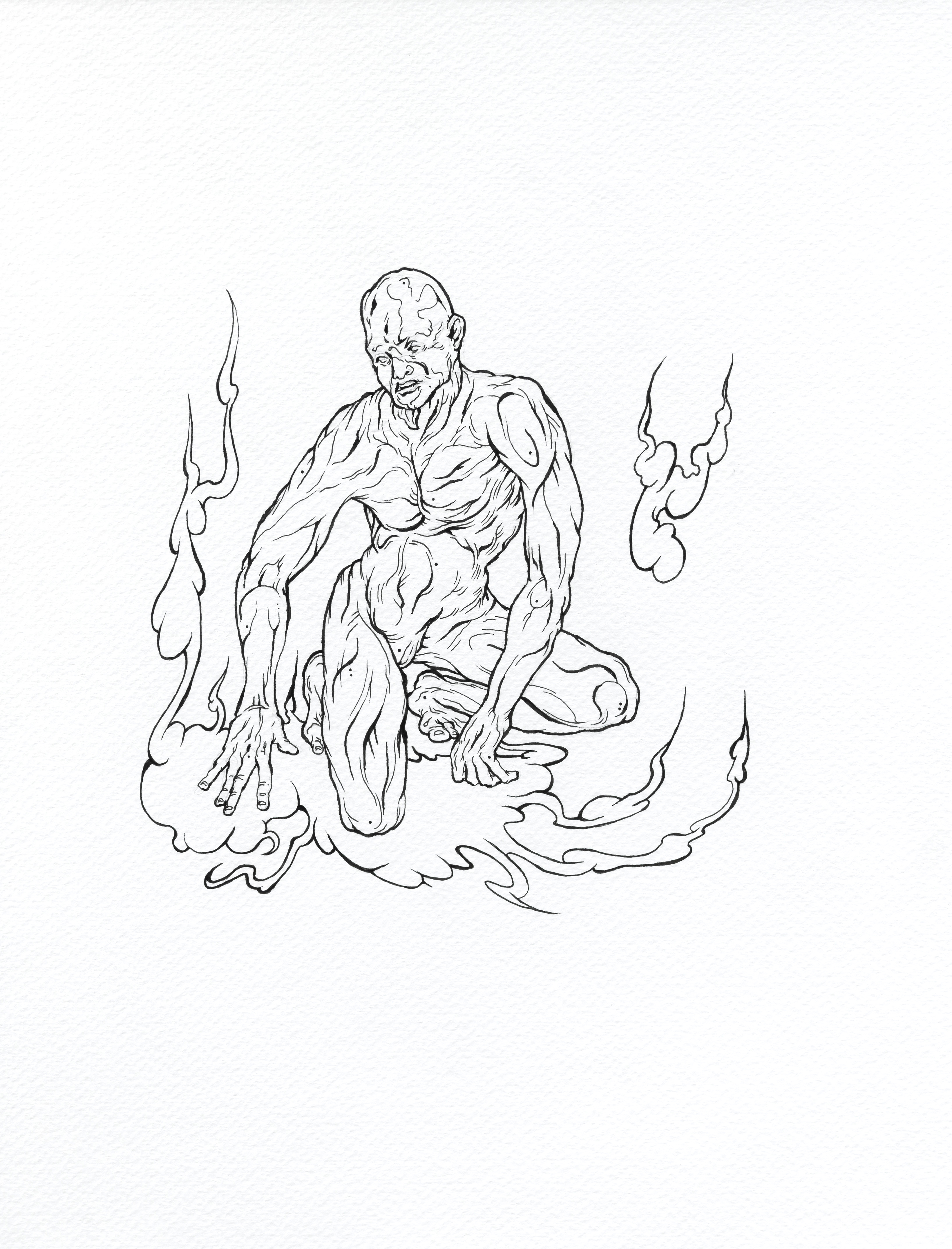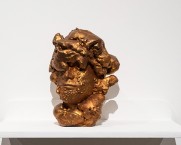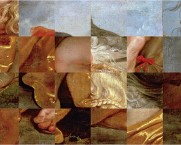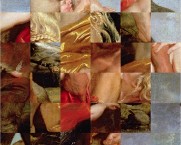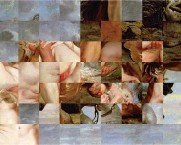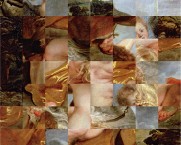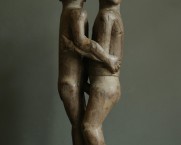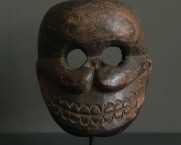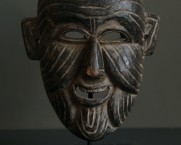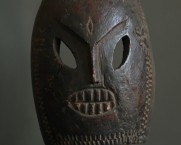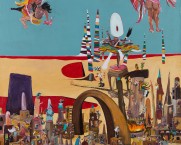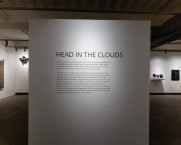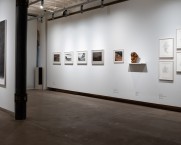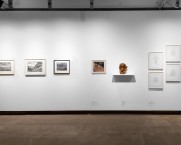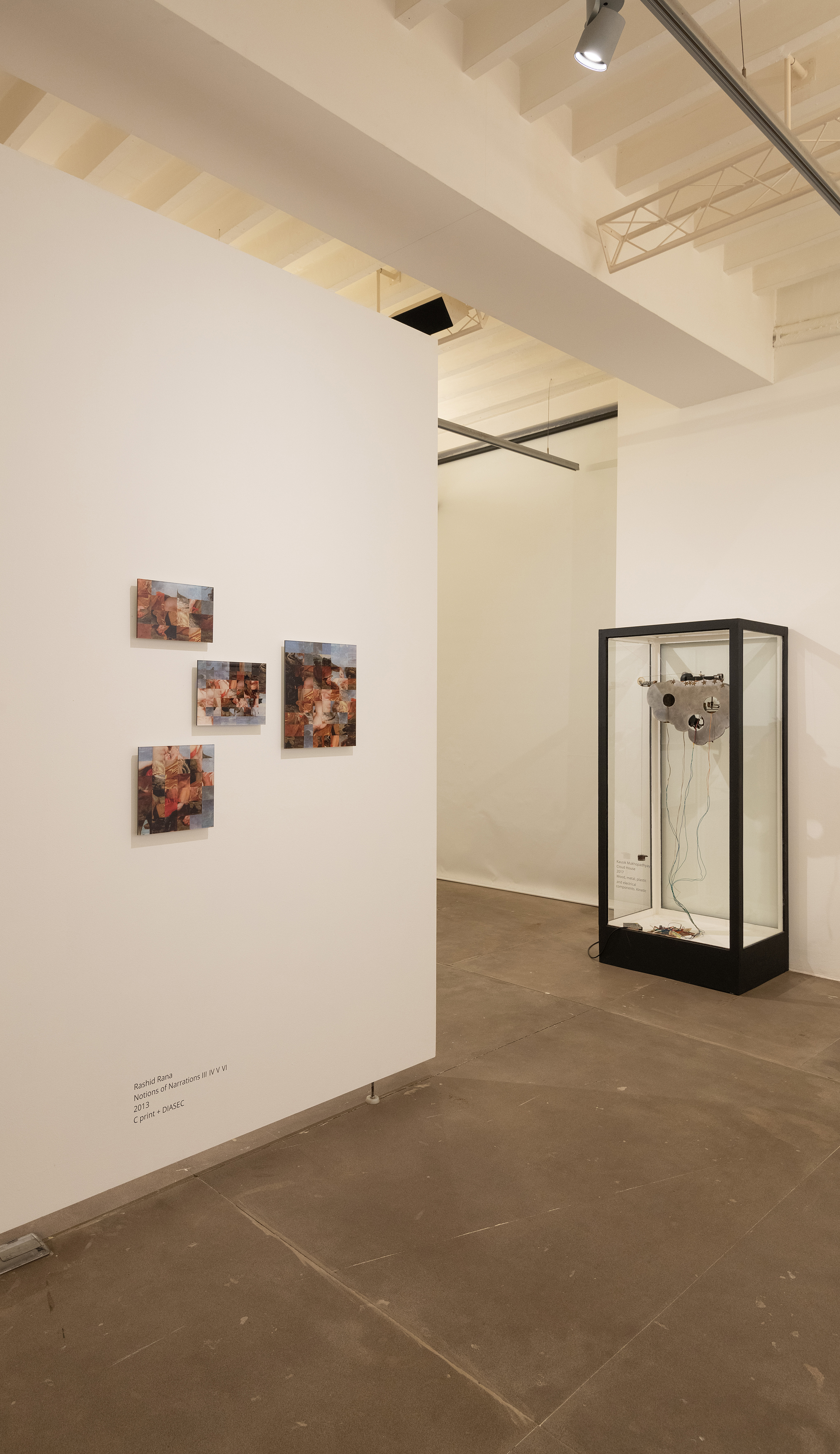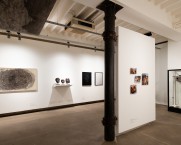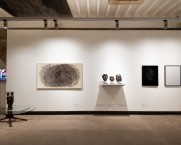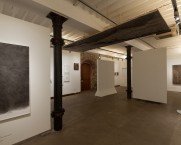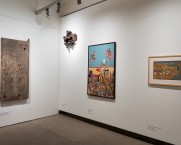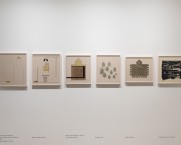C&L Shows
Head In The Clouds
Arshi Irshad Ahmadzai, Gagan Singh, Kausik Mukhopadhyay, Minam Apang, Nikhil Chopra, Rashid Rana, Sahej Rahal
2021
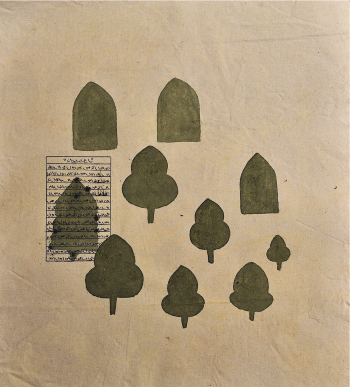
Overview
Over the last decade, Chatterjee & Lal has hosted a number of exhibitions in an ongoing series titled Simple Tales. The latest instalment is titled Head in the Clouds. Each iteration of the series has brought together works from contemporary and historical contexts across a range of media.
The proposition of Simple Tales is that art has always provided artists the ability to invest into their artworks the potentiality of communication across space and time. The vehicle used for this communication is often meta-narrative. Given the wealth of living traditions in the Indian subcontinent, it is perhaps unsurprising that contemporary artists in the region often respond, explicitly and implicitly, to storytelling in their art practices. The works selected will provide entry points to thinking about the relationship between earth and the heavens, and the negotiation of that relationship by artists over different time periods. Exhibited works have been chosen primarily for their engagement with myth, metaphor, and art history.
A guide to select works
Starting to the right of the entrance, and moving anti-clockwise around the gallery:
– Wooden panel of a Dikpala, Part of a ceiling Mandapa Kerala, 13th century
Namaskara Mandapas are wooden ceiling panels which form part of the sheltered interiors of temples. The Dikpala composition consists of eight individual wooden figures with Brahma placed in the centre. The Dikpalas are guardians of the eight directions. The present example is stylistically very similiar to the Dikapalas in the Katinamkulam temple dated by inscription to 1217 AD. A circle is counter-sunk within a square which forms the beam. The figure appears as though placed within a shallow cup. The features, attributes, etc predate the typical classical Kerala style which takes shape from the 14th Century onwards.
– Kiespa or Citipati wooden mask Arunachal Pradesh, Circa mid-20th century
Citipati is a protector deity in Tibetan Buddhism and Vajrayana Buddhism of India. There is a male and female one, to show the masculine and feminine aspect of human being. They are used, twice yearly, during ceremonial dances. By wearing the skull mask, the dancer takes the role of Citipati and shows the eternal dance of death as well as perfect awareness.
– Apa wooden ‘Old Man Mask’ Monpa Tribe, Arunachal Pradesh, Circa mid-20th century
This mask most likely portrays the character Apa, a character in Alchi Lhamo plays known to be the father of two sons to whom he offers lessons in morality and ethics. Culturally and artistically the Monpa belong to Tibetan Buddhism, which prevails throughout the Himalaya regions. Monpa have a distinct repertoire of masks, which are worn by monks at big monastery or temple celebrations during the so-called ‘cham’ dances.
– Wooden Himachal Mask Kullu Region, Himachal Pradesh, Circa mid-20th century
Possibly used in Fagli Festivals. The festival is organised to observe the “victory of good over evil”. This festival is celebrated to mark the end of winter or the beginning of spring. It is celebrated in the entire valley on the moonless night or Amavasya. Men dressed in traditional attire with masks on their faces were seen dancing in circles while hundreds of locals also gathered to watch the event.
– Wooden Erotic Figures Nagaland, Circa early mid-20th century
A key fixture in nearly all Naga settlements was the Morung, or Men’s House, which served as something of a community center. It was usually the biggest and most beautifully furnished building in a village, spacious and decorated with ornate carvings. Numerous wooden sculptures decorated the walls and posts of the farthest end of the innermost space of the Morung. They expressed the narrative traditions of the Naga. Wooden sculpture such as this, depicting erotic subjects would be posted near the walls of the Morung, were not uncommon and thought to relate to fertility.
– Amit Dutta Chitrashala (House of paintings), 2015 | Single channel HD video 19 mins. | Looped
– Garuda stealing the Amrit
Jaipur School, Mid-19th Century
This is page from an important folio that traces the story of Garuda’s pursuit of Amrita, the ambrosial nectar, which he sought in order to free his mother from slavery. This particular page captures the moments in which Garuda approaches the celestial city of the gods, steals the Amrita from a ring of fire and the protection of a large army, and then flies away with his bounty down to the abode of the Nagas. The artists responsible for the page show Garuda three times in the work in order to depict the sequential movement in the story.
– Wooden sculpture of Garuda Kerala, 14th century
Garuda holding the pot of Amrita. Here, Garuda is sculpted, pot in hand, escaping from the gods, having stolen the Amrita in a bid to free his mother, who was tricked into slavery.
– Wood and iron Santhal Door
Santhal Tribes, Orissa, Circa early mid-20th century
A rare and unusual tribal door panel with a geometric patterned border. The upper section is carved in low relied with a large tree upon which a hunter sits with a blow dart. The lower half is intricately detailed with geometric circular and floral patterns. Original iron hinges and latches. –
Arshi Irshad Ahmadzai
Works from the series: Naguftaha – e – Hawwa | The unspoken words of Hawwa*, 2020
The artist’s notes:
Alam-al-ghaib Alam-al-Shahood | Unseen Universe and Observable Universe
Qalb-e-Adam-o-Hawwa | Hearts of Adam and Eve
Raat ne jab siyaahi kou dhoop mein badalte dekha..
Baagh-e-Hira | Garden of Hira
Dasht-e-Barchi | (Dasht e Barachi is a settlement in western Kabul)
Khwaabha-e-lams nashuda | An untouched dream
* Hawwa is the name given to Eve in Islam
Minam Apang
Untitled, 2020
Charcoal on cloth
Commissioned and exhibited for the Dhaka Art Summit, Seismic Movements
Chatterjee & Lal would like to thank the following for their help with loans and consignments: Chemould Prescott Road, Natesan’s Antiqarts and Phillips

